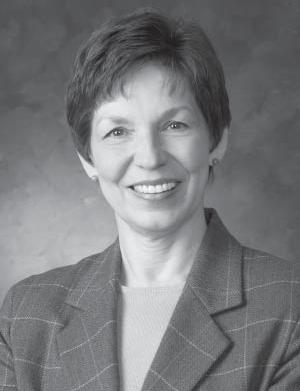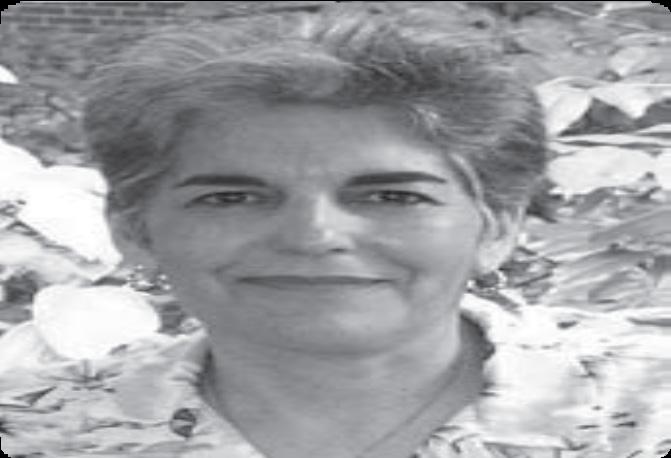
8 minute read
Learning Powered by
from PROGRESS Spring 2010
by VALRC
Learning POWERED BYTechnology
On March 5th, the U.S. Department of Educa- The NETP embraces 21st century learning, tion’s Office of Educational Technology released describing five essential focus areas, each with Transforming American Education: Learning a goal and related action recommendations for Powered by Technology, the draft of the National local, state, and national educators (as well as Educational Technology Plan (NETP) 2010. The public and private sector stakeholders). plan calls for “revolutionary transformation rather Learning than evolutionary tinker- ing”* to meet the Obama Serving the Underserved The model of 21st cen- tury learning described in administration’s priorities this plan calls for engaging of raising the percentage of Americans with two- year or four-year college degrees to 60% by 2020 “Many adults in the workforce are underproductive, have no postsecondary creand empowering learning experiences for all learn- ers. The model asks that we focus what and how we and closing achievement dential, and face limited op- teach to match what peo- gaps based on race and in- portunities because they ple need to know, how they come. lack fluency in basic skills. learn, where and when The plan notes that digital exclusion, or the disparities in technology Unfortunately, they have little time or opportunity for they will learn, and who needs to learn. It brings state-of-the art technolo- access and use, “must be the sustained learning and gy into learning to enable, overcome because job ap- development that becom- motivate, and inspire all plications, health informa- ing fluent would require. For students, regardless of tion, and many other cru- cial information resources appear only in the digi- tal realm (http://www. these learners, technology expands the opportunities for where and when they can background, languages, or disabilities, to achieve. It leverages the power of technology to provide per- fcc.gov/recovery/broad- learn. Working adults can sonalized learning instead band/).” One of the under- take online courses at any- of one-size-fits-all curricu- served populations men- time and anywhere. While lum, pace of teaching, and tioned explicitly in the plan, along with low income and minority learners and Eng- individual adults benefit with more opportunities for instructional practices. Goal: All learners will have engaging and em- lish language learners, is advancement, companies powering learning experi- adult learners. and agencies benefit from ences both in and outside
The plan also describes the increased productivity of school that prepare a new federal program, the Online Skills Laborato- ry, which will build a library of openly available, web- of a fully literate workforce, one continuously preparing for the future.” them to be active, cre- ative, knowledgeable, and ethical participants in our globally networked soci- based resources for learn- ety. ing. These courses will be designed with input from Assessment experts in content, pedagogy, and technology The model of 21st century learning requires and offered free of charge through community new and better ways to measure what mat- colleges. The flexibility provided by online ac- ters, diagnose strengths and weaknesses in the cess can help meet the needs of adults who are course of learning when there is still time to working or raising a family. improve student performance, and involve mul-
tiple stakeholders in the process of designing, conducting, and using assessment. In all these activities, technology-based assessments can provide data to drive decisions on the basis of what is best for each and every student and that in aggregate will lead to continuous improve- ment across our entire education system.
Goal: Our education system at all levels will leverage the power of technology to measure what matters and use assessment data for con- tinuous improvement.
Teaching
Just as leveraging technology can help us improve learning and assessment, the model of 21st century learning calls for using technology to help build the capacity of educators by en- abling a shift to a model of connected teaching. In such a teaching model, teams of connected educators replace solo practitioners and class- rooms are fully connected to provide educators with 24/7 access to data and analytic tools as well as to resources that help them act on the insights the data provide.
Goal: Professional educators will be sup- ported individually and in teams by technology that connects them to data, content, resources, expertise, and learning experiences that enable and inspire more effective teaching for all learn- ers.
Infrastructure
An essential component of the 21st century learning model is a comprehensive infrastruc- ture for learning that provides every student, educator, and level of our education system with the resources they need when and where they are needed. The underlying principle is that in- frastructure includes people, processes, learning resources, policies, and sustainable models for continuous improvement in addition to broad- band connectivity, servers, software, manage- ment systems, and administration tools. Build- ing this infrastructure is a far-reaching project that will demand concerted and coordinated ef- fort.
Goal: All students and educators will have access to a comprehensive infrastructure for learning when and where they need it.

Productivity
To achieve our goal of transforming American education, we must rethink basic assumptions and redesign our education system. We must apply technology to implement personalized learning and ensure that students are making appropriate progress through our K-16 system so they graduate. These and other initiatives require investment, but tight economic times and basic fiscal responsibility demand that we get more out of each dollar we spend. We must leverage technology to plan, manage, monitor, and report spending to provide decisionmakers with a reliable, accurate, and complete view of the financial performance of our education sys- tem at all levels. Such visibility is essential to meeting our goals for educational attainment within the budgets we can afford.
Goal: Our education system at all levels will redesign processes and structures to take ad- vantage of the power of technology to improve learning outcomes while making more efficient use of time, money, and staff.
Grand Challenge Problems
To help fulfill its vision of the future, the NETP calls for the funding and support of the Digital Promise, an organization “with the mis- sion of serving the public good through research and development at the intersection of learn- ing sciences, technology, and education.” This center would “identify key emerging trends and priorities and recruit and bring together the best minds and organizations to collaborate on high-risk/high-gain R&D projects.” It would also tackle what the NETP refers to as “grand chal- lenge problems,” ambitious research and devel- opment efforts that would benefit from national leadership.
The National Education Technology Plan is still in draft form. The U.S. De- partment of Education welcomes com- ments and suggestions at its website.
*Quotations, along with goals and descriptions of the five focus ar- eas, are taken directly from Transforming American Education: Learning Powered by Technology, National Educational Tech- nology Plan 2010, draft released March 5, 2010, by the Office of Educational Technology, U.S. Department of Education.
Book Review: Strength in What Remains
Written by Tracy Kidder Reviewed by Hillary Major

In Strength in What Remains, TracyKidder tells the story of Deogratias, a Burundian medical student who in 1994 fled ethnic violence in his home country to arrive in New York with a single suitcase, no English, and no idea of what to do next. The first section of the book combines background on Deo’s youth and young adulthood in Africa, including his harrowing experiences of genocide and civil war, with an account of his struggles in New York City. Many adult educators will find the details of Deo’s new life heart-achingly familiar. Plagued by nightmares and post-traumatic stress, working at a grocery for scant pay under an abusive boss, and debating the merits of sleeping in Central Park or in a tenement with no working plumbing, Deo’s existence is bleak. Kidder describes Deo’s laborious attempts to learn English with the aid of pocket dictionaries and his perseverance despite basic errors such as pronouncing “Hi” as “Hee.” At one point, Deo realizes that his grocer co-workers treat their brooms better than they treat him.
With help, Deo is able to find a place to live and to attend Columbia University. The second half of the book describes Deo’s personal mission to found a medical clinic in rural Burundi. After the formidable challenges Deo faced essentially starting over in a new country, his return journey and success in harnessing donations and community resources to construct a clinic that bridges local ethnic divisions seem all the more remarkable.
Deo’s tale of triumph against the odds inspires a mix of admiration and awe. At the same time, the reader begins to play the what-if game: What if Deo hadn’t achieved the test scores that gained him admittance to prestigious Burundian preparatory schools and, ultimately, medical school? What if any of a number of close calls during Deo’s months on the run in the wilds of Burundi and Rwanda had transpired just a little bit differently? What if Deo hadn’t befriended the wealthy medical student who was eventually able to arrange his flight to the U.S.? What if he hadn’t encountered a French-speaking baggage clerk who was willing to show him the ropes of tenement life? What if a couple of New Yorkers hadn’t taken Deo into their apartment and supported his stateside college education? As the narrative delves into the obstacles arrayed against this young, intelligent African refugee, the reader comes to suspect that, despite Deo’s hard work, suffering, commitment, and ingenuity, his success is in many ways the product of lucky coincidence — and to wonder about the workings of the systems that thrust so many additional hurdles in Deo’s path.




